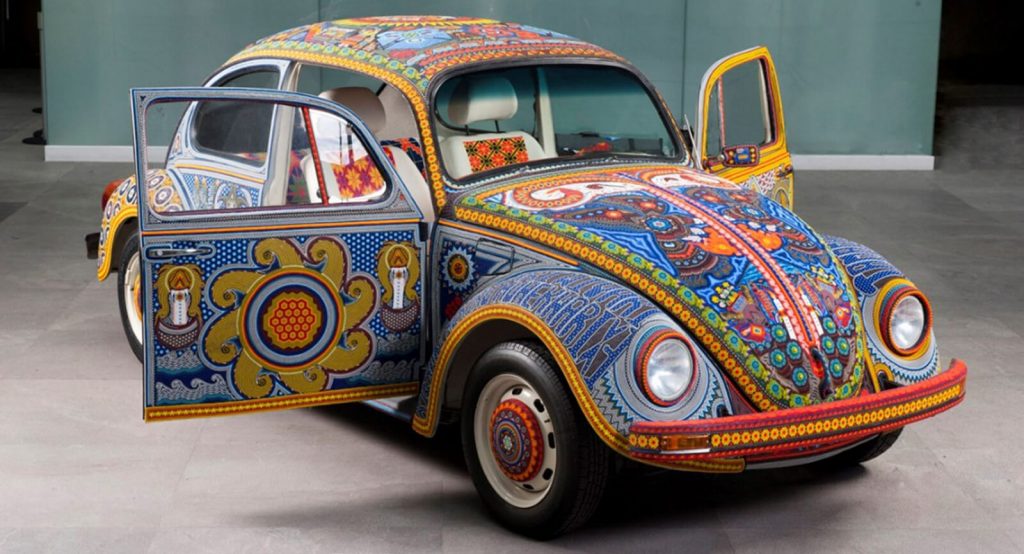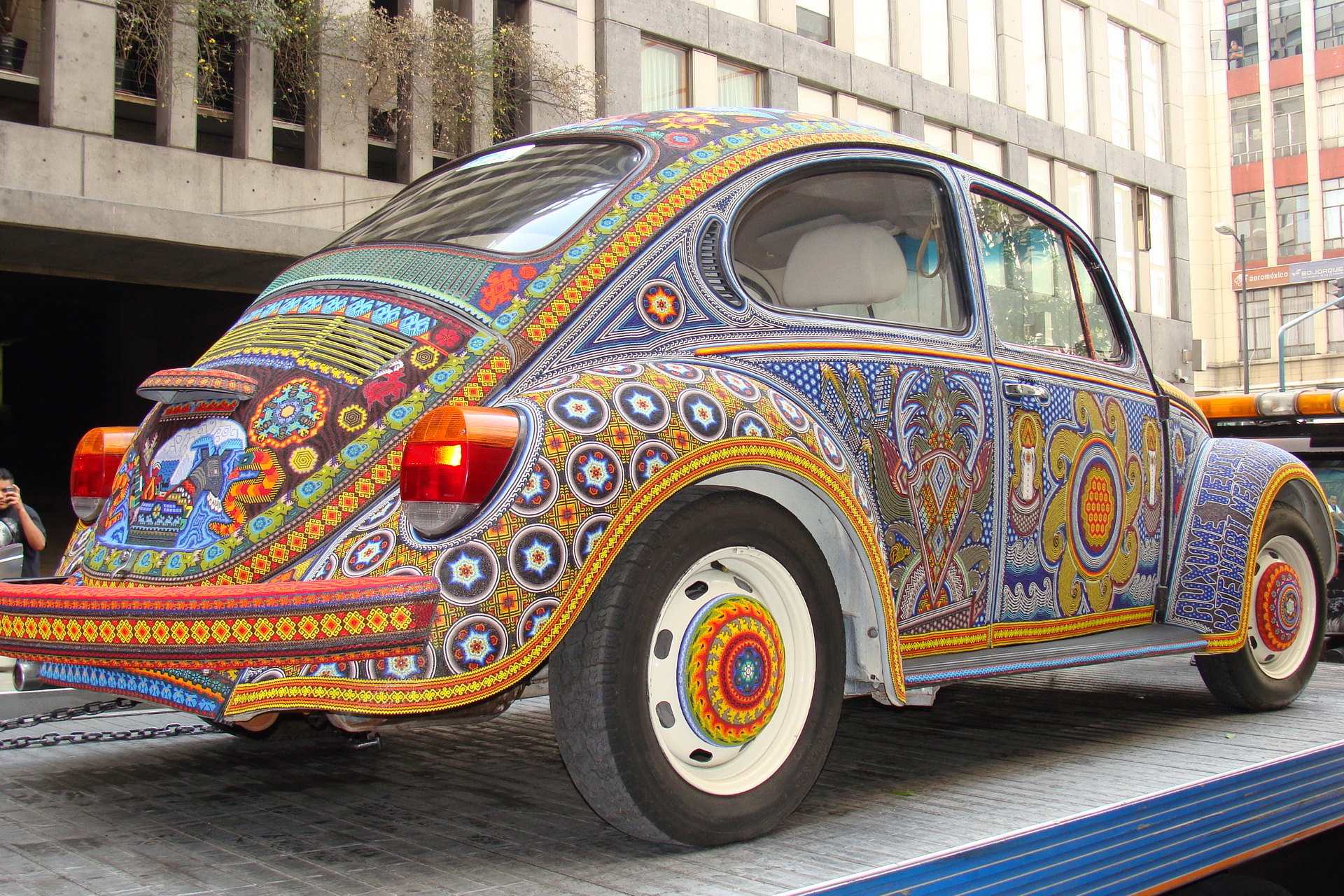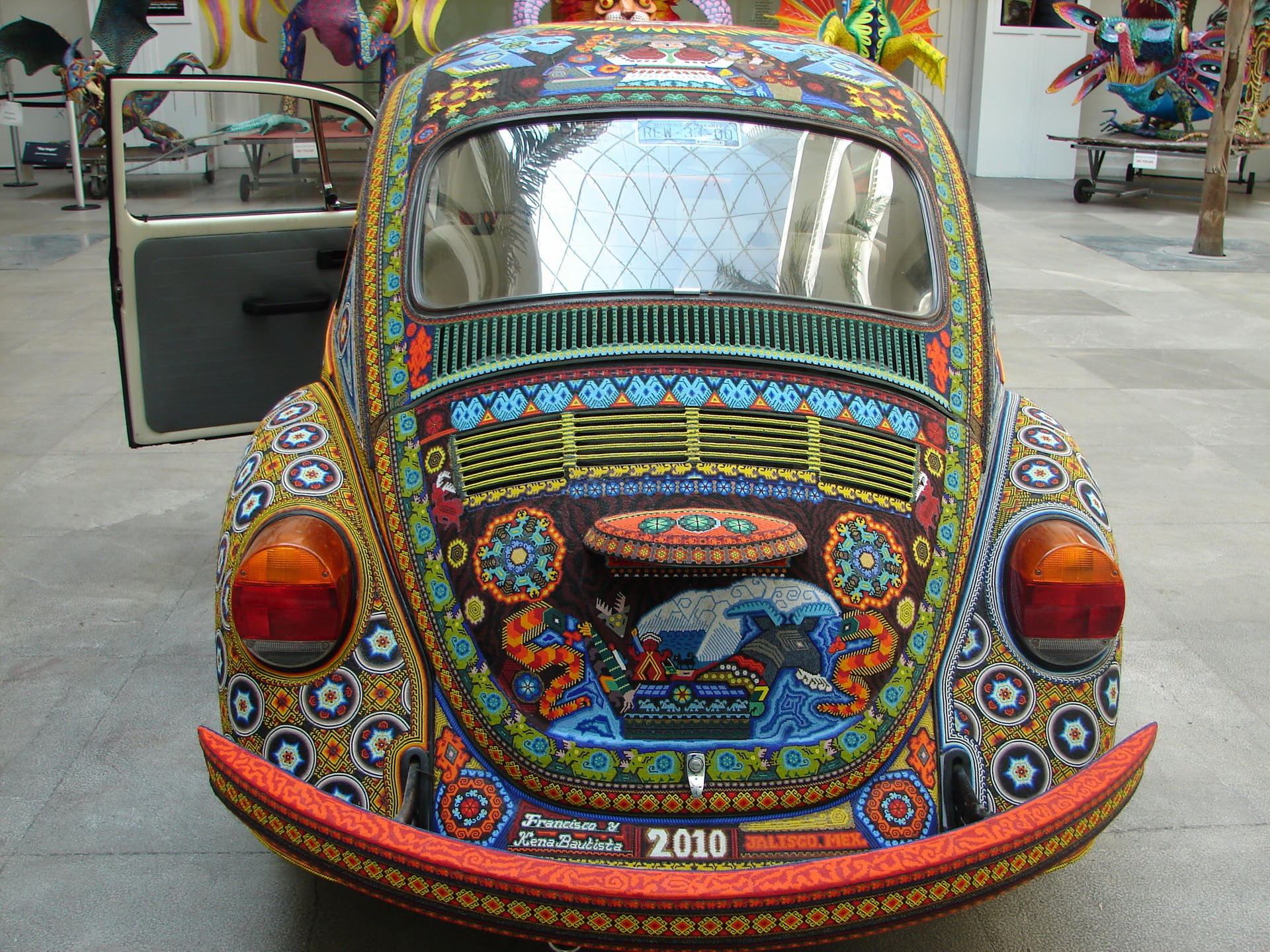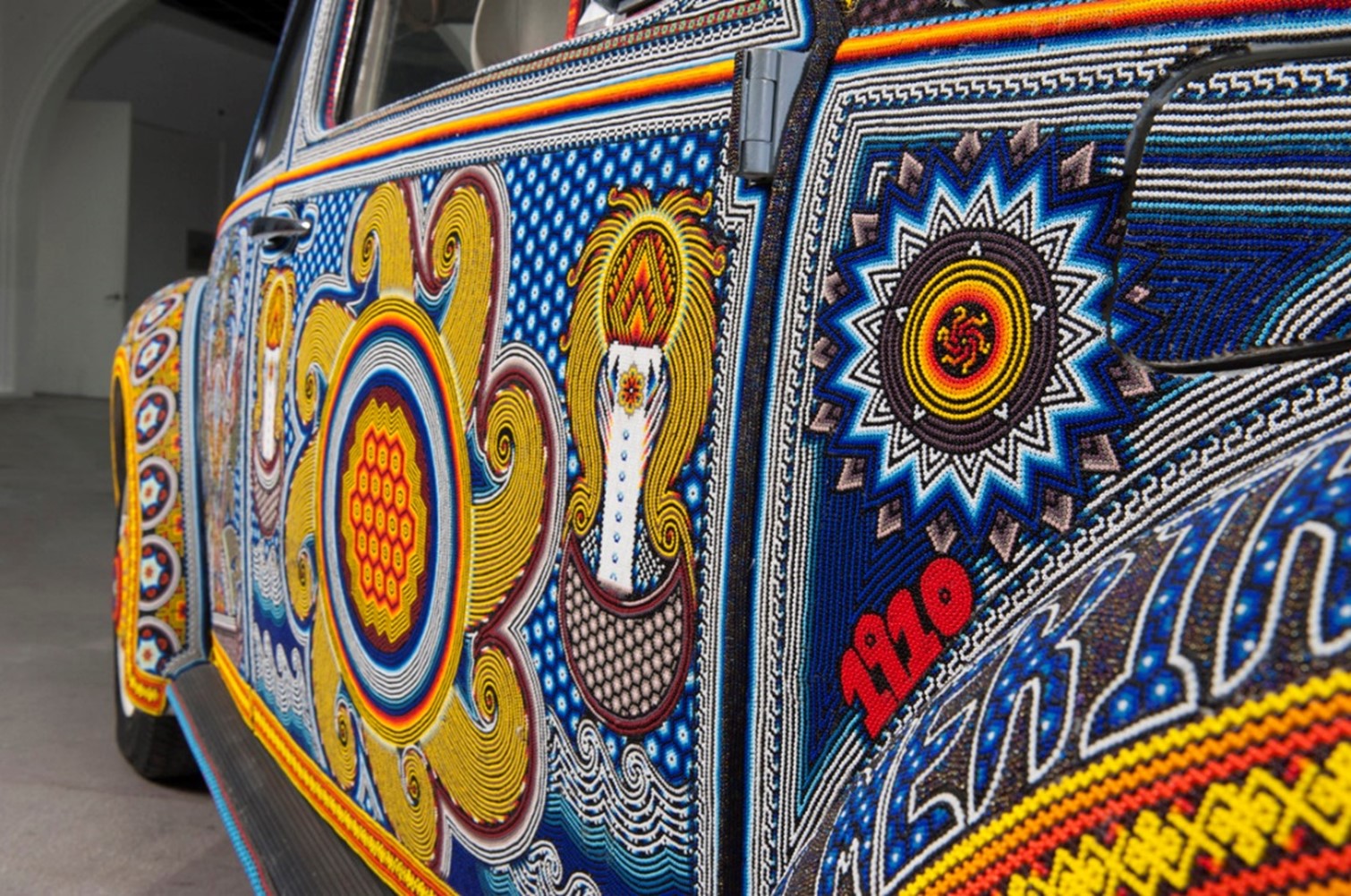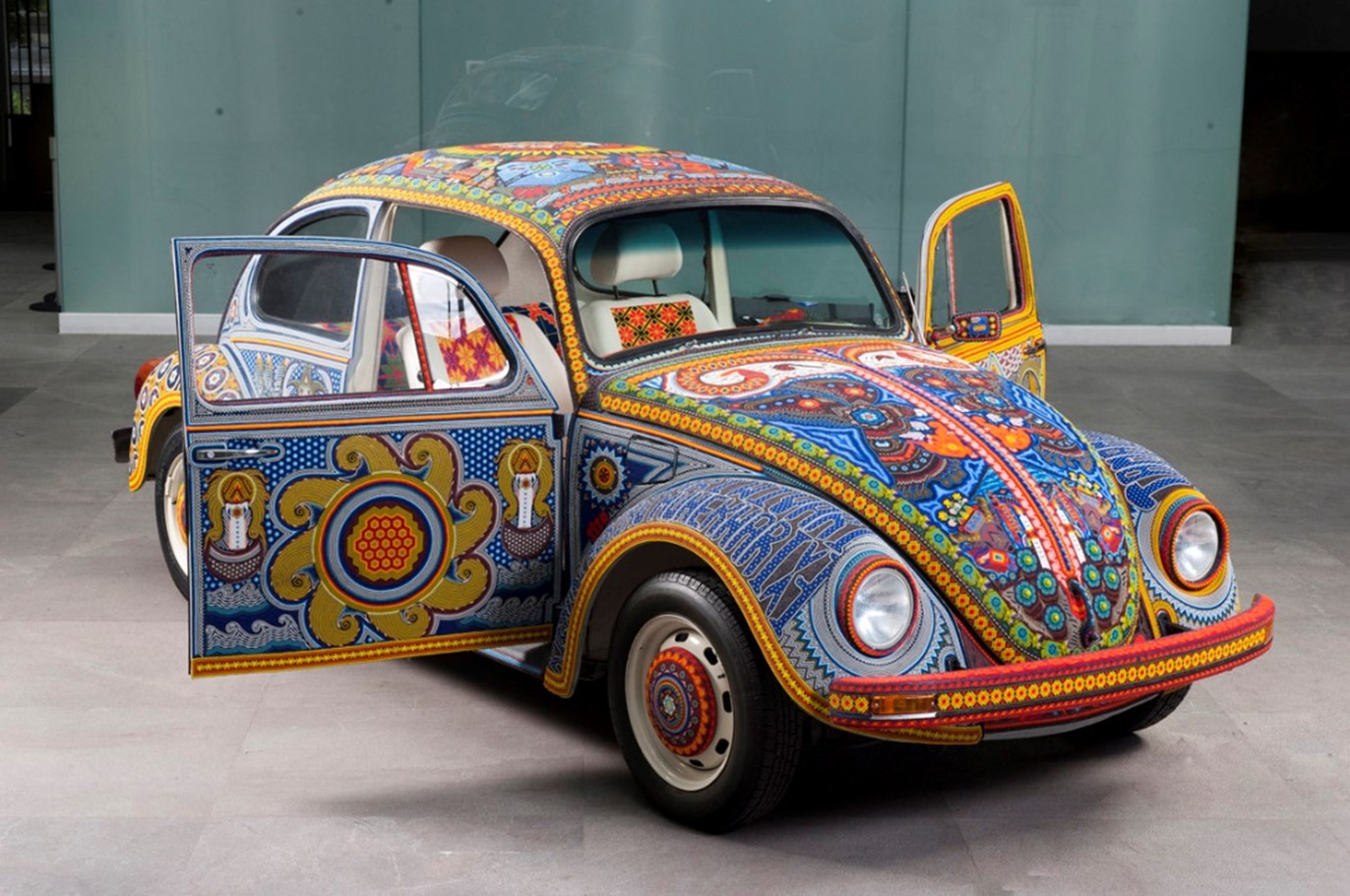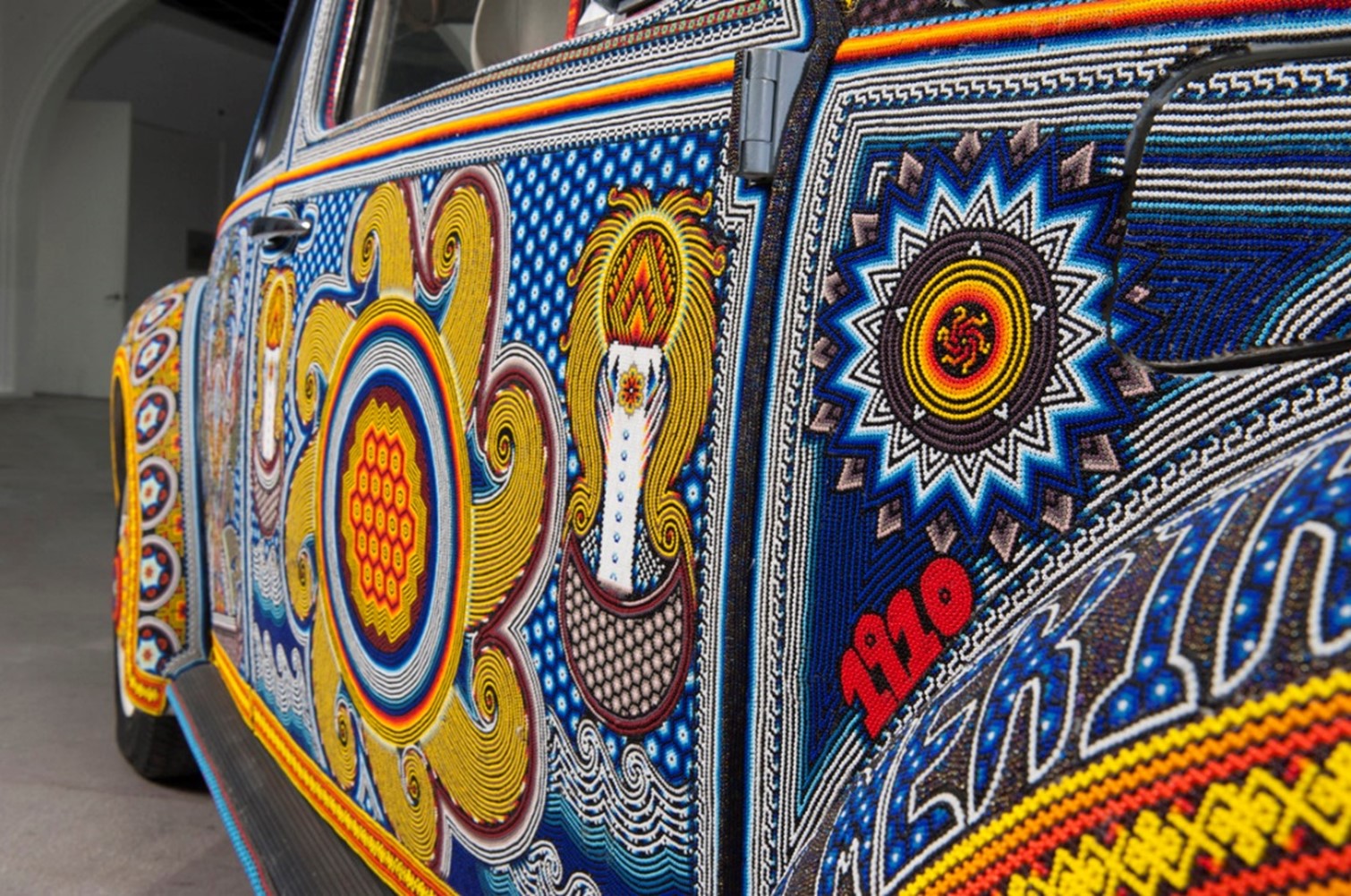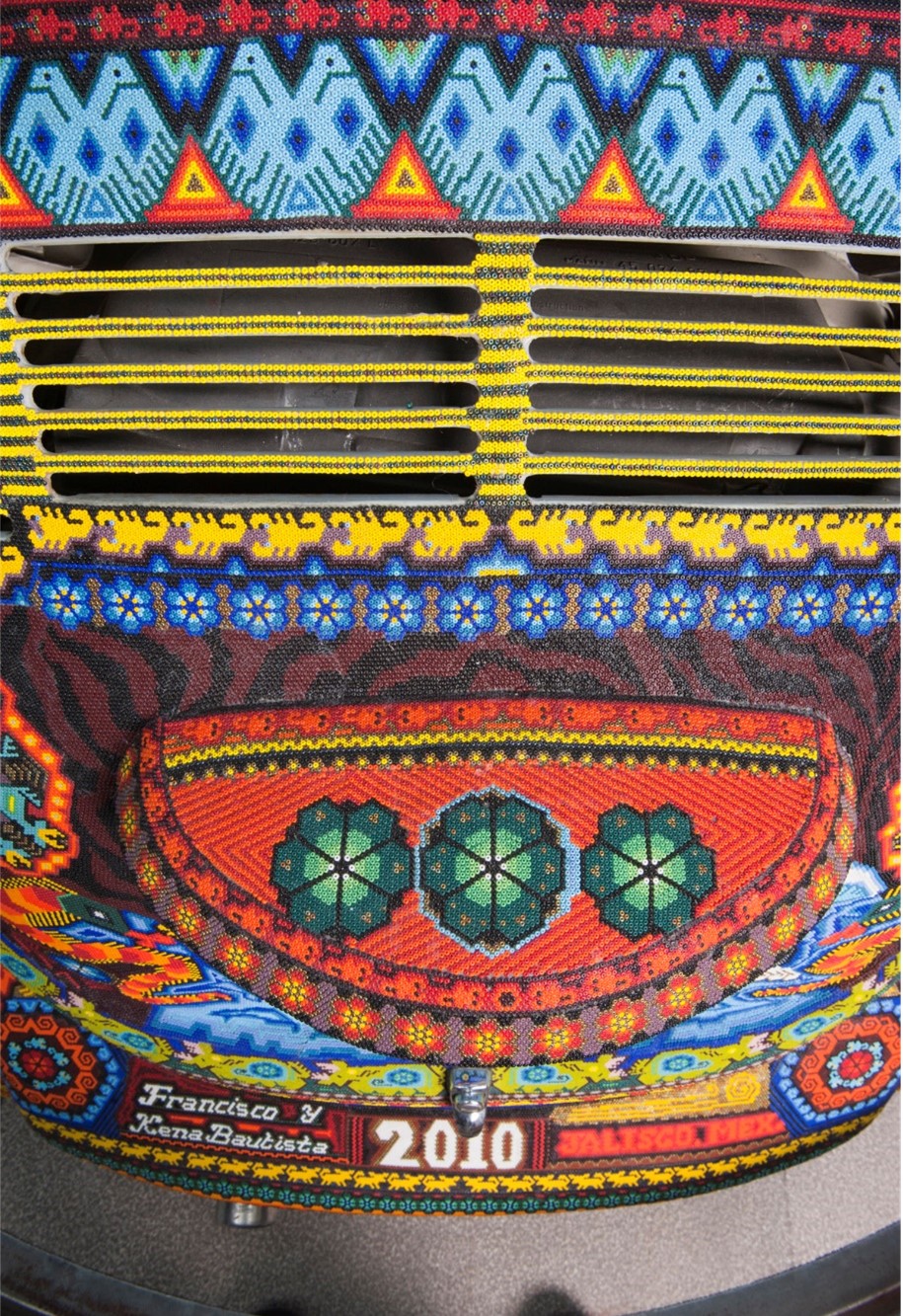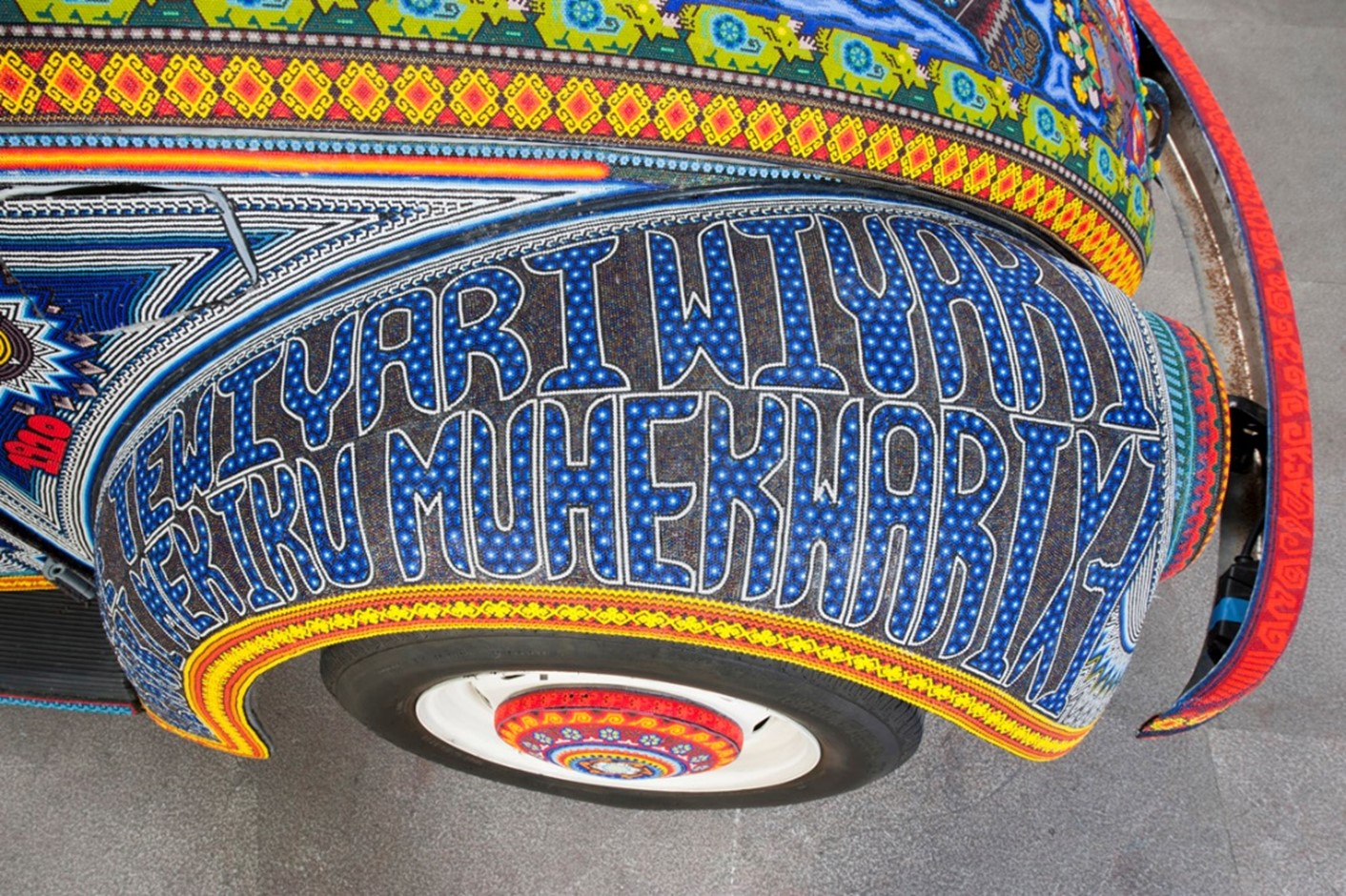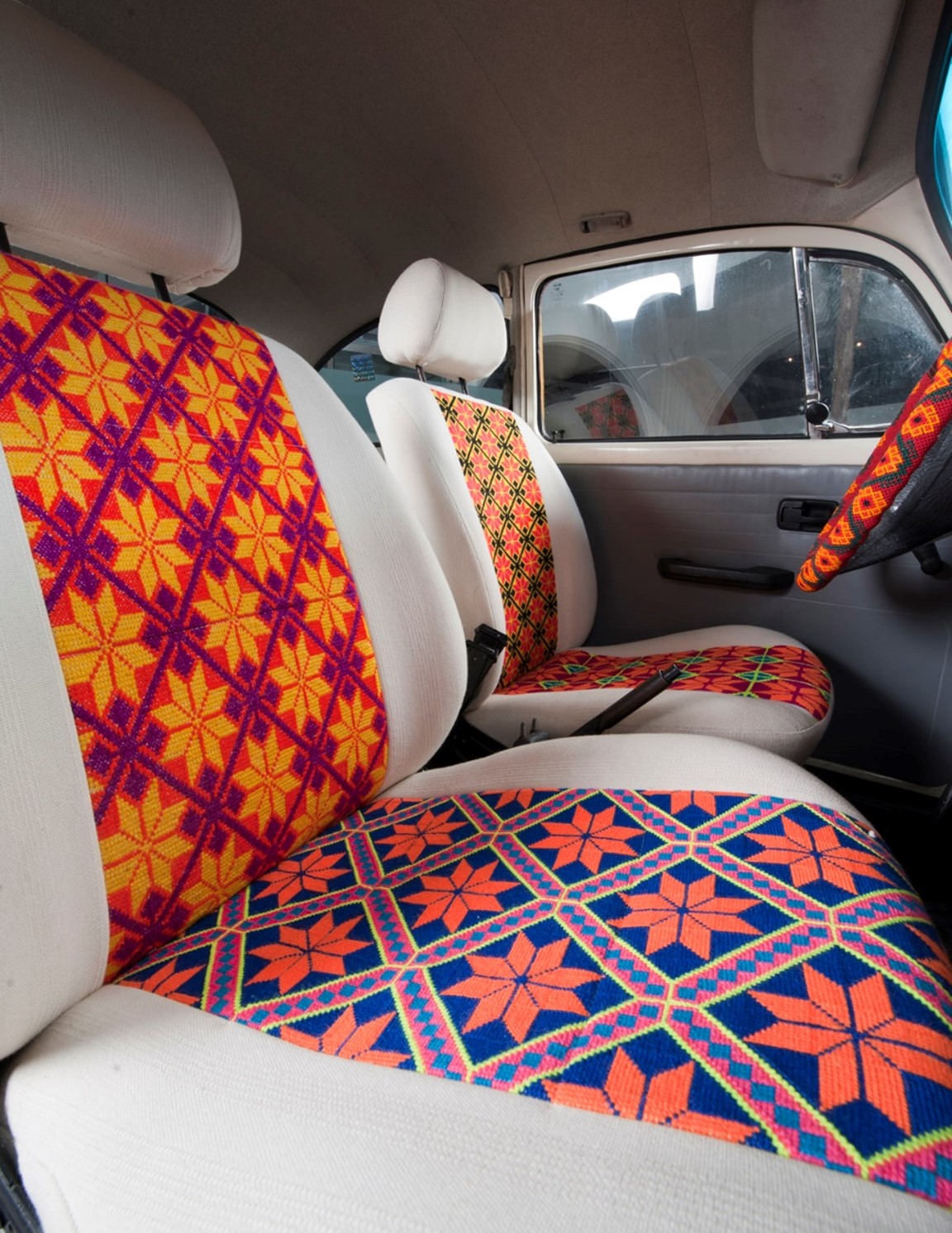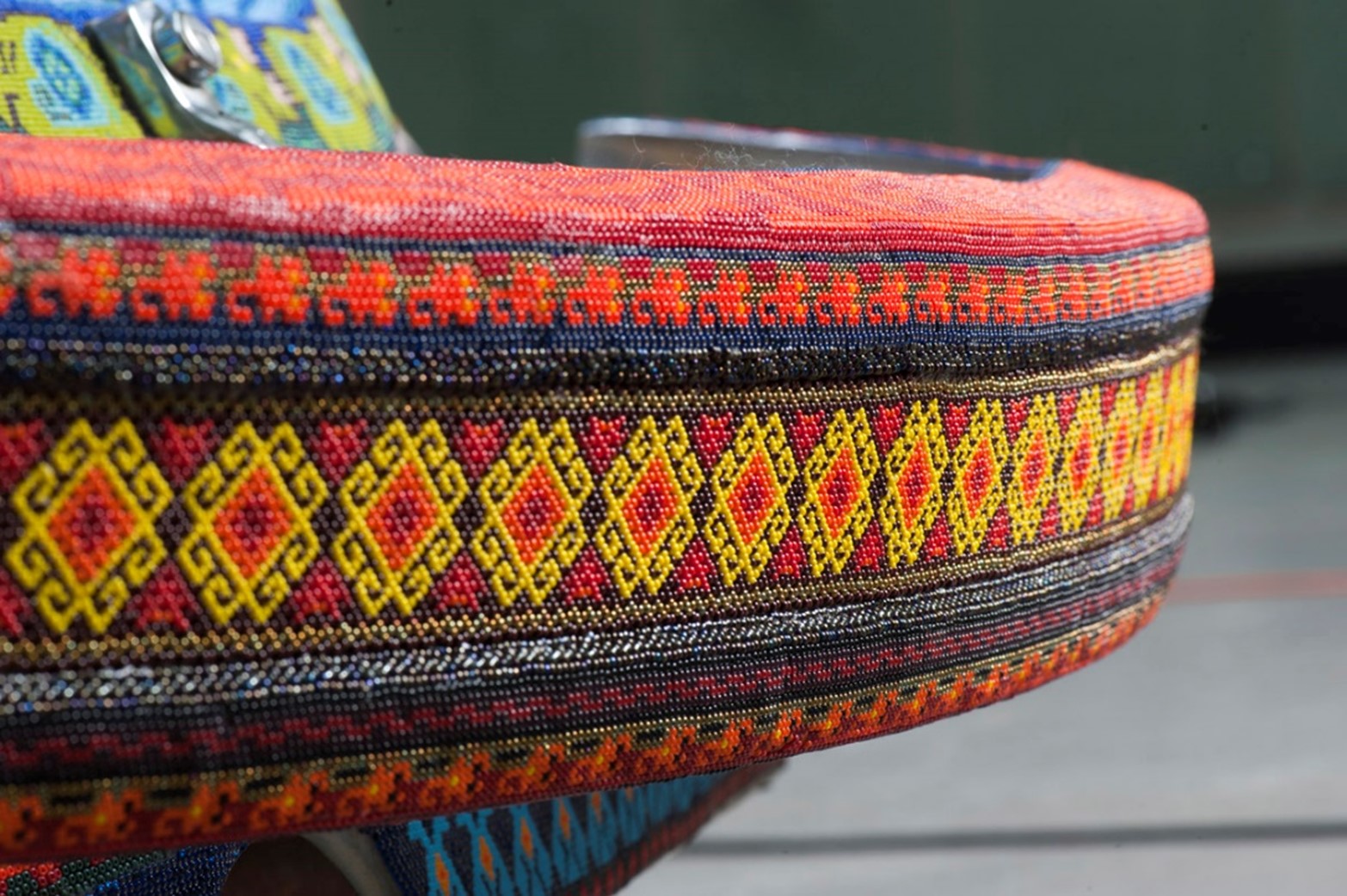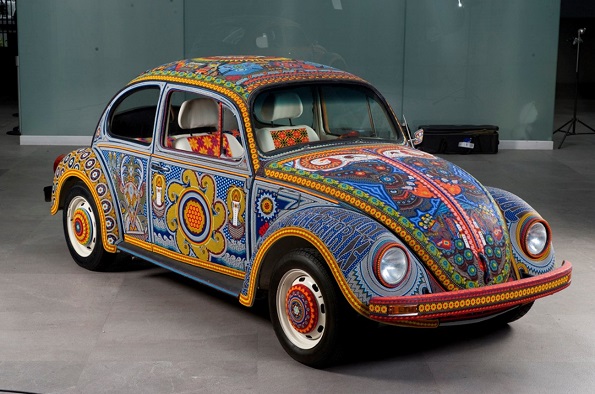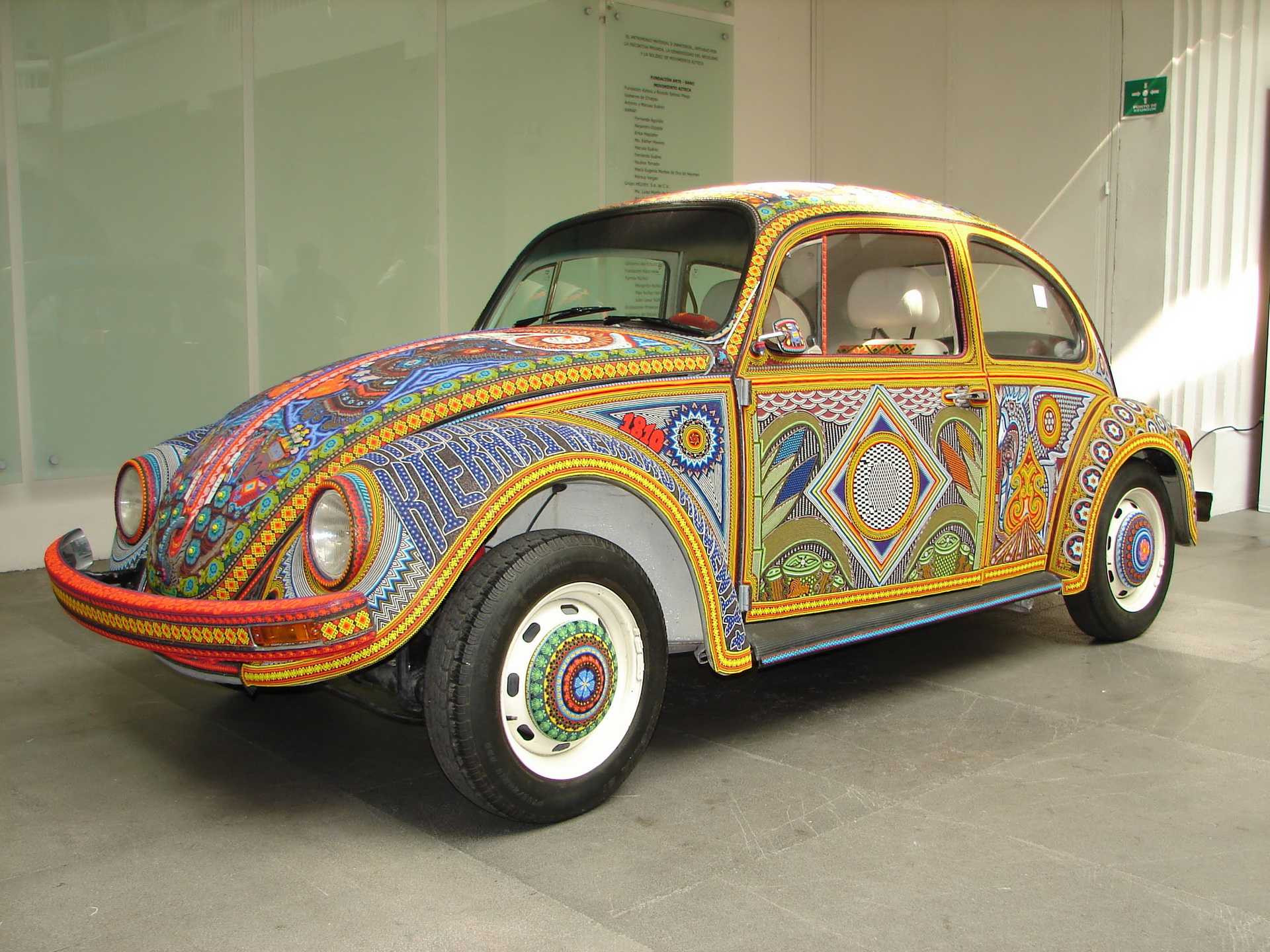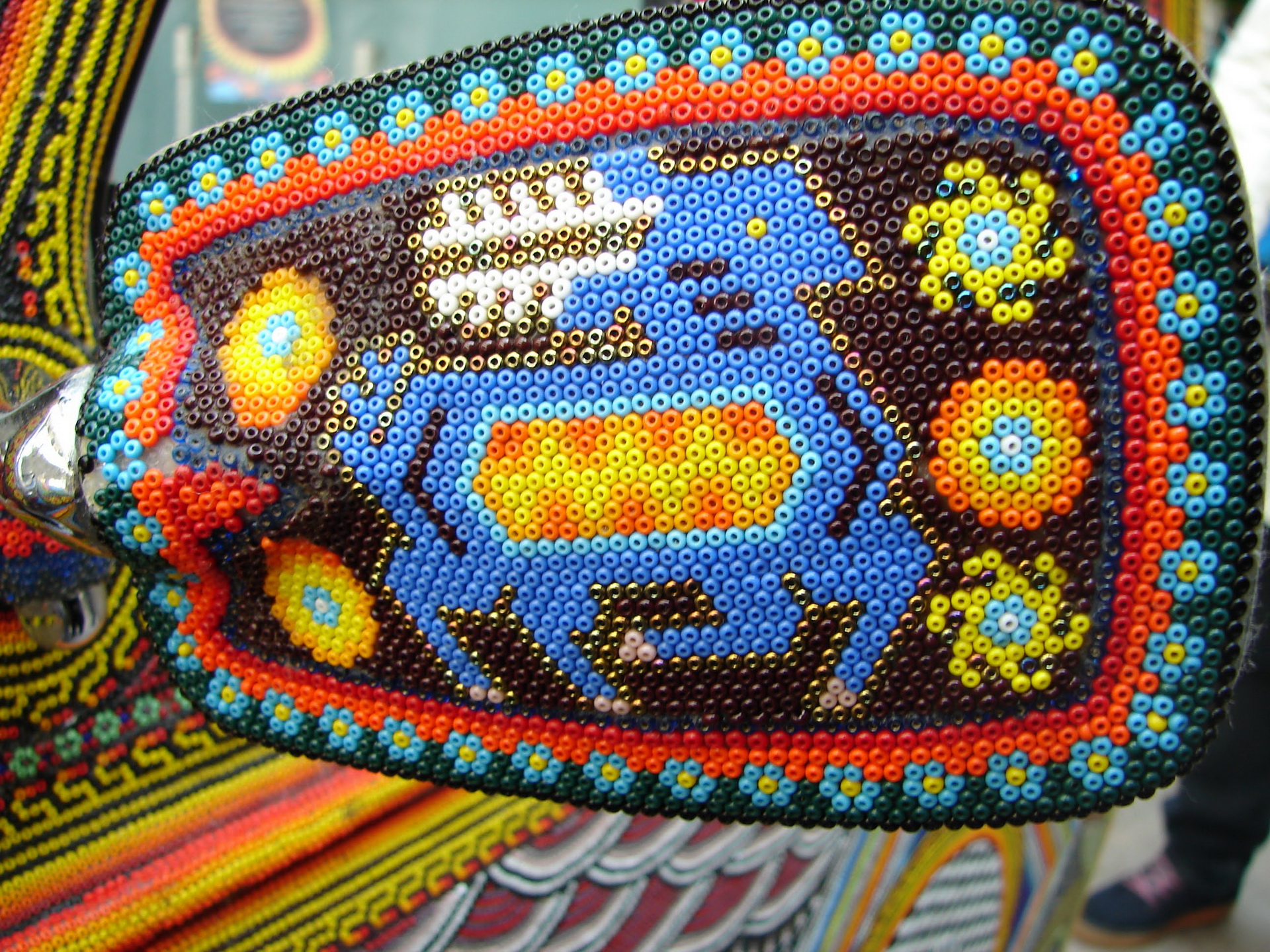Production of the Volkswagen Beetle may have ended last year, but it remains one of the most iconic cars ever made, especially in the older iterations, such as this 1990 example that has been converted to a work of art 20 years later.
Commissioned by public and private organizations, it is dubbed the ‘Vochol’, after the word ‘vocho’, a common term for the Bug in Mexico, and ‘Huichol’, which is another name for the Wixarika indigenous group of Nayarit and Jalisco, who have preserved many of their pre-Colombian traditions over the centuries, including the decorative beadwork.
Watch Also: James May Says Every Car Enthusiast Should Drive A VW Beetle
Decorating the exterior and interior of this Beetle are 2,277,000 beads, which were applied in elaborate patterns by hand by eight artists from two Huichol families. They worked for eight months, totaling over 9,000 hours, to complete the project, which features symbols that pay tribute to their culture.
For instance, there are two snakes in the clouds on the hood that represent rain, a deer, scorpions, birds and peyote flowers on the sides, a shaman steering a canoe at the back and a large sun on the roof that symbolizes the union between humans and gods. Four two-headed eagles offer protection to passengers, and the phrases ‘100 years since the Mexican Revolution’ and ‘200 years of Independence’ are spelled out in the Wixarika language along the fenders, marking the centennial of the Mexican Revolution in 1910 and the war of independence from Spain in 1810.
The unique Beetle Vochol was presented at a museum in Guadalajara, Mexico, and then featured in Mexico City for exhibition. Subsequently, it traveled the world, stopping at museums in South America, the United States, Europe, Asia and the Middle East. Whenever it is not on loan, it can be seen at the Museo de Arte Popular in Mexico City.



